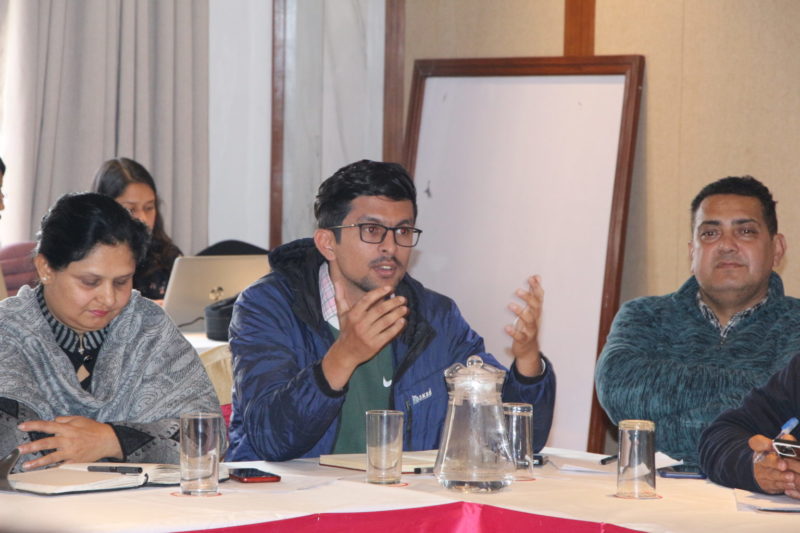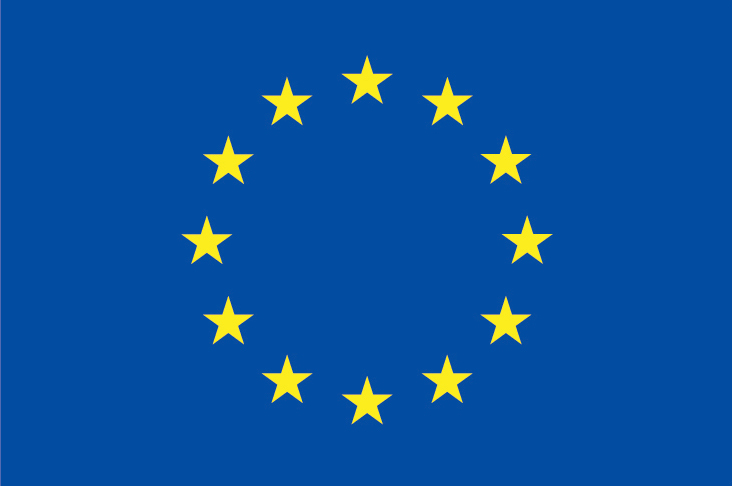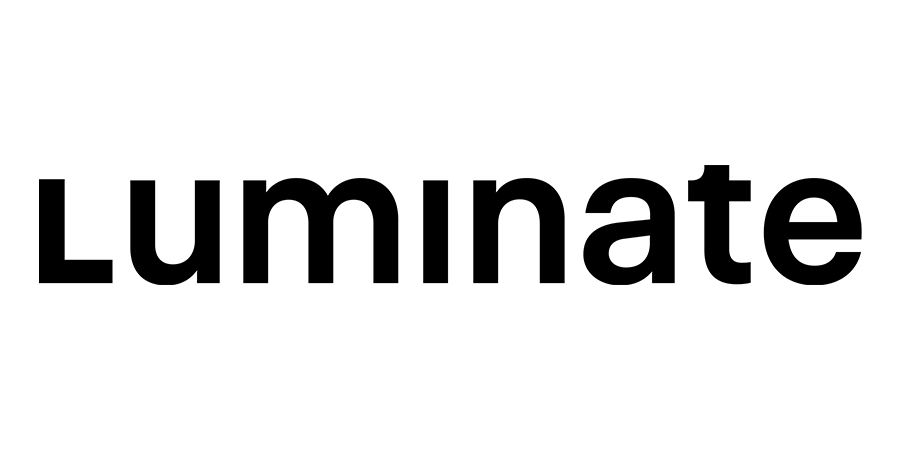
Countering Kleptocracy in Nepal
Written by: Accountability Lab Nepal
Accountability Lab Nepal (ALN) thoroughly engaged with the watchdogs within and outside government to embark on the conversation on Nepal’s kleptocratic nexus, its impacts, and dekleptification measures. In early 2023, ALN hosted a total of six workshops and directly engaged with more than 150 individuals to orient and learn from them about how kleptocracy functions in Nepal. Through three sectoral leadership circle meetups with the media, CSOs, and bureaucrats in the Bagmati Province (Kathmandu), ALN mapped the different positions of the actors in the kleptocratic nexus, and the resistances that some have built from within. Similarly, three leadership circle discussions/provincial workshops in Karnali Province (Surkhet), Lumbini Province (Butwal), and Gandaki Province (Pokhara) brought forward the regional corruption and kleptocracy scenario of the respective provinces. In addition to reflecting the national-level nature of kleptocratic actors, these dialogues also presented some unique sectoral and regional impacts of kleptocracy that will be detailed and discussed in the following sections.
Some Observations on Nepal’s Kleptocracy
The six leadership circle meet-ups introduced the dekleptification leaders to different perspectives and avenues on Nepal’s kleptocratic nexus. Unlike the traditional notion of kleptocracy in repressive regimes, kleptocracy in Nepal is not operated by or for an autocrat or a group of oligarchs to accumulate their personal wealth by abusing state resources. Rather, kleptocracy in Nepal can be argued to be a participatory and democratic phenomenon where multiple actors—including political leaders and parties, representatives from public institutions, business groups, media houses, individual and international brokers, international actors, and voters—support one another to appropriate state wealth and share it in varying degrees. Similarly, kleptocratic practices in Nepal are regulated through seemingly legitimate means such as introducing bills in the parliament to benefit certain interest groups, influencing public institutions through political appointments, etc. Additionally, watchdogs like civil society and media are generally either owned or influenced by political leaders and the private sector who also are highly likely to become a part of the kleptocratic nexus. Unfortunately, dekleptification efforts from civil society and media have been rare, and there is a growing trend of leaders ignoring conflicts of interest, resulting in increasing impunity.
Leadership Circle MeetUps in Kathmandu
- Leadership Circle Meetup with Media Professionals: The first leadership circle meetup was conducted on 24 January 2023 with 29 investigative journalists, from print, broadcast, and online media, who have been writing corruption cases and raising voices against kleptocracy. The leadership circle was aimed and designed to discuss the kleptocratic nexus in Nepal and the role of media in combating kleptocracy. All attendees expressed their critical thoughts and insights and shared common challenges while working as investigative reporters and also discussed collective solutions. The leadership circle was facilitated by Rajneesh Bhandari, Editor-in-Chief, Nepal Investigative Multimedia Journalism Network (NIMJN). It also included guided presentations by Ajaya Bhadra Khanal, Editor-in-Chief of Ukaalo online news, and Bidhya Rai, Sub-Editor, Kantipur, who shared their case studies on procurement irregularities in the Nepal Airlines’ Narrow Body Aircraft and tourism-related malpractices in the Khaptad National Park respectively.
- Leadership Circle Meetup with Government Officials: The second leadership circle was conducted with 16 government officials/bureaucrats working in the frontline of service delivery and policymaking. A significant number of these bureaucrats were young and they firmly believed that their meaningful involvement would change the corrupt system and break the kleptocratic network. The discussion was centered on understanding the role of bureaucracy in facilitating and countering the kleptocratic nexus. The leadership circle included in-depth presentations by Dr. Sanjay Sharma, Researcher, on how the kleptocratic nexus functions; Deepa Dahal, Senior Reporter at Ukaalo online news, on the illegal acquisition of the land of Bansbari Shoe Factor Ltd. by the Chaudhary Group, and Dr. Bhishma Kumar Bhusal, Joint Secretary at the Ministry of Home Affairs, on the role of bureaucrats in countering kleptocracy.
- Leadership Circle Meetup with Civil Society Leaders: The third leadership circle meeting was conducted with civil society leaders, activists, and academics. The leadership circle was focused on discussing kleptocracy and expanding their ideas, efforts, and tools to combat kleptocracy. The leadership circle had the participation of 29 civil society leaders, who brought interesting insights into understanding the corruption nexus in Nepal and the anti-corruption efforts that they have been pushing from their organizational capacity. The workshop included in-depth presentations by Deepak Adhikari, Editor of Nepal Check, and Roshani Giri, Independent Advocate, who shared insights from the IRI Dekleptification Handbook and a case study on developments of the Nijgadh International Airport respectively. Furthermore, the discussion focused on the role of civil society in countering kleptocracy was facilitated by Tanka Aryal, Co-founder of Digital Rights Nepal.
Provincial Workshop Proceedings
The provincial dialogues were conducted in Surkhet in Karnali Province, Pokhara in Gandaki Province, and Butwal in Lumbini Province. The workshops were designed to orient and learn from the participants about Nepal’s kleptocratic nexus and its larger impacts on democracy and governance. The workshops brought together government representatives, bureaucrats, civil society representatives, and media workers of the respective provinces to discuss the regional and national corruption scenario.
- Karnali Province: The leadership circle in Karnali Province had a participation of 22 individuals, including ward chiefs, media reporters, social activists, lecturers, and civil society representatives. The provincial workshops began with a guided presentation on Nepal’s kleptocratic nexus by the ALN team, which was then followed by the presentation on regional corruption and kleptocracy scenario by Lalit Budha, Bureau Chief at Annapurna Post. Budha spoke at length about his findings on the irregularities in the purchase of oxygen plants during the peak of the pandemic and corruption reported during the opening ceremony of Karnali – Rara Tourism Year. He also critiqued the decision of the provincial government to increase the incentive to the elected representatives while the province was reeling under capital deficit, connecting it to the notion of kleptocracy. In the above cases and many others, the speaker and the participants both shared that investigative committees are always made, but the conclusions are rarely drawn due to political interventions. Moreover, the other discussion that was largely focused in the province was around how the provincial decision-making and operations are still dominated by federal politics and leaders. The participants agreed that such intervention has heightened corruption, as the federal interests take over local and provincial concerns.
- Gandaki Province: The leadership circle in the Gandaki Province was attended by 23 participants including the representatives from the provincial parliament, the Commission for the Investigation of Abuse of Authority [CIAA], Pokhara metropolitan city, private sector, research organization, media, and civil society. The workshop started with a brief background on kleptocracy and Nepal’s kleptocratic scenario which was led by the ALN team. It was then followed by the presentation of Santosh Pokharel, Gandaki correspondent for Nagarik Daily, who shared details on regional corruption and presented two cases on the irregularities observed during the construction of Pokhara International Airport and the increasing land encroachment by the private sector across the Fewa Lake. The discussions in the province were focused on how the private sector and government bodies together misappropriated natural resources, and the need to regulate them. Also, with Pokhara International Airport, the discussion on the geo-political dimension of kleptocracy also came up about how international actors, including banks and donor agencies, can collaborate and appropriate investments in infrastructure projects, social aid, etc. A provincial parliamentarian, Prakash Baral, stressed the need for a collective effort from the government, CSO, and media to integrate dekleptification measures and integrity in the school curriculum.
- Lumbini Province: The leadership circle in the Lumbini Province was attended by 40 participants which included the Deputy Mayor of Butwal Sub-Metropolitan City, ward chiefs, representatives from CIAA, civil society, media, activists, and bureaucrats. Like in Karnali and Gandaki, the ALN team briefly oriented the participants about the concept of kleptocracy, its network in Nepal, impacts on democracy, etc. The Lumbini correspondent of Kantipur, Amrita Anmol, then presented corruption and kleptocracy scenarios across the province. She shared in detail her coverage of corruption seen during the construction of the building of the Lumbini Provincial Hospital and discrepancies observed during vehicle repair. Her presentations depicted a closely knit kleptocratic nexus of lower and higher-level bureaucrats that made it difficult for media and CSOs to identify irregularities.

Key Learnings
- Democratization of corruption: The discussion brought interesting insights such as how the kleptocracy is becoming democratized in Nepal—that there are often many players who distribute the state resources amongst themselves, ineffectiveness, and politicization of institutions that monitor corruption. Kleptocrats use social, political, cultural, and religious norms to normalize corruption.
- Kleptocracy exacerbates inequality: Kleptocrats essentially steal resources that should be used for public services such as healthcare, education, and infrastructure. Consequently, the quality of life for the general population suffers, enhancing the gap between a handful of elites and the rest. From a regional perspective, it also means that the federal kleptocrats use the state resources for their benefit, relegating the provinces to further underdevelopment. Corruption and irregularities during Covid-19 pushed the provinces into a public health disaster, leading to the deaths of thousands and the loss of personal resources.
- Big media houses and their connections: In Nepal, the media is closely linked to politics and the private sector. Most advertising and funding come from business houses and political figures, leading to self-censorship and reluctance to cover controversial issues. For example, mainstream media avoided covering the NCell tax controversy as NCell is a major advertiser. Journalists have reported that media bosses prevent the publication of big corruption stories, limiting the reporter’s and media’s ability to report independently and objectively.
- Lack of evidence for investigative reporting: The lack of factual data in case of grand corruption prevents journalists from creating impactful reporting. As the kleptocratic nexus has its influence on several institutions including government bodies, they are likely to conceal important data that could uncover the irregularities.
- False development narrative to foster kleptocracy: Although the narrative that infrastructure development promotes prosperity has been widely sold, it has come across as just another way kleptocrats extract government funds or misuse foreign investments. A prominent example of it could be the proposed Nijgadh International Airport, which is portrayed as a changemaker in Nepal’s economy if it starts functioning. However, the cost of constructing the airport and the environmental and ecological expenses of the proposed airport is seldom talked about.
- Policies loopholes to flourish corruption/kleptocracy: The policies in Nepal have a lot of loopholes that provide a space for the kleptocrats to play upon. For example, the procurement policies of the Pokhara International Airport highlight that construction companies worked with kleptocratic actors from the Nepal government and bureaucracy and ensured that the lowest bid was filed by a company that had a close kleptocratic connection with the representatives of the government.
- Bureaucracy is the most reliable source of information: Bureaucracy has information about all procurements, infrastructure development, and policies. Therefore, whistleblowers within the media or civil society should have a sound understanding and network with the bureaucracy as well. Similarly, the whistleblowers and changemakers within the bureaucracy can collaborate with the media and CSOs and transmit the information they have in order to break the kleptocratic network.
- Kleptocratic nexus is highly organized, but the dekleptification efforts are disorganized: It was repeated in each of the leadership circle meetings that anti-corruption champions within media, government, and civil society should collaborate. As all these sectors play unique and significant roles in maintaining good governance and transparency, their collaboration is of paramount importance in dismantling Nepal’s kleptocracy.
- Need to train and empower investigative journalists: Many independent journalists face a severe lack of resources, skills, and security to conduct investigations on grand corruption. Investigative journalism requires a range of skills including research, data analysis, and the ability to manage complex sources. There is a need for journalists to have access to such training and other support.
- The power of the Right to Information (RTI): Journalists like Bidhya Rai and others shared that they should extensively use the RTI and gather information from public entities and track corruption. RTI could be an important tool in uncovering hidden information from the public and media and keeping a check on any wrongdoing from the concerned authorities.
- Evidence is everywhere but coherence is not: We have learned that there is huge evidence and stories to expose kleptocracy. However, a strong data repository in open data format is mandatory that can be used by interested individuals in countering kleptocracy. The Right to Information could be a major tool in extracting relevant information.
- Investment in investigative media: The government, media houses, and CSOs need to provide enough resources to promote independent young researchers. These resources could be in terms of information that is very hard to dig out or provide incentives for independent investigative stories that expose kleptocratic networks.
- Federal politics and interests dominate provincial decisions: As Nepal’s federal structure is nascent, multiple issues related to the jurisdiction and conflict of interest have arisen in the past seven years of implementation of federalism. The federal politicians often engaged in and dominated the provincial decision-making often in order to benefit their cronies in the kleptocratic nexus.
- Natural resources controlled by the federal government: The provincial and local governments raised concerns that the federal government retains significant control over resources, including authority over development projects. Various private businesses exploit these resources with protection from federal politicians and government representatives. The exploited nature of the kleptocrats, on the one hand, results in various calamities resulting in the loss of local lives and property, and on the other hand leads to loss of revenue for sub-national governments, affecting their service delivery and performance impacting citizen lives.
Key Solutions
- Mapping the wrongdoers as well as right-doers is important: It is important to map both the wrong and right-doers when it comes to promoting anti-corruption measures. Such mapping provides details on whom to contact when needed. Dr. Bhusal highlighted that although many individuals representing Nepal’s bureaucracy work closely with the actors and brokers from several kleptocratic networks, there also are changemakers within who can help break the nexus.
- Promote values of integrity and transparency: All discussions highlighted that the societal norms and expectations of success push a person towards committing irregularities. Therefore, it is important to shift the narrative in a more positive manner and discourage social expectations that could foster corrupt behaviors.
- The synergies between CSOs and media: CSOs can help amplify issues based on investigative reporting to demand greater accountability from the powerholders. For CSOs to loud their voices, they need evidence that the media can supplement. CSOs can also share ground narratives and stories on the human cost of corruption while the media can further follow up and spread the message. A strong network and synergy of civic leaders, new media experts, and established media houses would become the voices of citizens.
- Promote civic tech to innovate new solutions to fight corruption: A collaborative effort of CSOs could build on their existing advocacy efforts and innovate innovative ways to track corruption and promote open governance. One such example could be a hackathon where the young talents use civic tech to create new tools to fight corruption and promote data transparency. ALab can take the lead on this and create a synergy between various stakeholders.
- Need for strong and independent agencies to monitor corruption: There are 18 governmental agencies in Nepal that monitor corruption and irregularities. However, rather than having high volumes of organizations that have conflict and confusion of jurisdiction, their efficacy should be monitored and strengthened.
- Collaboration between CSOs: There needs to be a collaborative network between CSOs working on anti-corruption so that the collective voices are heard better. Furthermore, as corruption is a cross-cutting issue that expands across themes, CSOs from various fields should understand and analyze the direct and indirect impacts of corruption and the kleptocratic nexus.
- Creating a safety net for whistleblowers: Civil society and media can collaborate and reinforce each other’s capacity to promote and protect whistleblowers within government, private sectors, and political nexus. It is important to identify honest government officials and support their collective efforts to promote integrity, transparency, and good governance within the bureaucracy.
- Translocal and transnational network of journalists: The media personnel also stressed the importance of the translocal and transnational networks of journalists that collaborates in reporting and follow-up of the kleptocratic nexus that generally transcends beyond one region and often involves transnational actors and brokers assisting corrupt politicians and private sectors.
- Raise voice against impunity: Impunity is easily served for political leaders and those close to them. It is crucial for the whistleblowers within government, civil society, and media to come together and raise voices against such to hold the government accountable.
- Enhance the understanding of corruption: It was noticed throughout the events that corruption is mostly understood as bribery. In the regional setting, the understanding of kleptocracy is limited. It is just attached to bribery, but the policy changes to benefit a certain group, and misuse of available funds are also corruption. It is necessary to orient the media and civil society on the larger aspect and horizon of corruption, also kleptocracy, for better advocacy.
- Rewarding the positive and good actions: The media and civil society are generally and quite obviously critical of the harmful actions of the government; however, they often fail to acknowledge the positive works of the government representatives and bureaucrats. Therefore, it is important to reward the positive works of the government to show solidarity and motivate them for future actions.
- Mapping inconspicuous stakeholders: It is important to map the often unnoticeable actors like the lower level staff, drivers, and messengers as they might bear critical information that might help break the kleptocratic nexus.
Conclusion
Through six leadership circle meetings, ALN delved deeper into anti-corruption and dekleptification efforts from a variety of sectors, promoting cross-linkages and collaboration between leaders from different walks of life. Despite some limited success, efforts to tackle kleptocracy in Nepal—such as anti-corruption campaigns and strengthened legal systems—require a more comprehensive approach. This involves bringing together dekleptification leaders from diverse sectors to form a strong, synergetic network capable of countering the kleptocratic nexus. ALN has the potential to lead this network and foster dekleptification efforts among various individuals and organizations.





